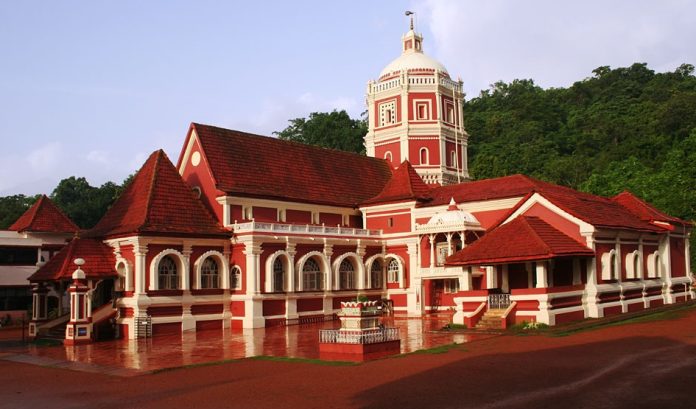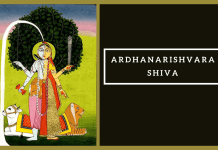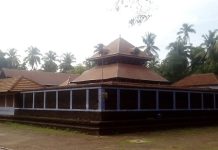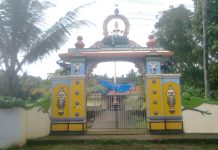Situated at the foothills of Kavalem village in Ponda Taluka, Goa, the Shri Shantadurga Temple, also known as the Shantadurga Saunsthan, stands as a revered place of worship. Dedicated to Goddess Shanta Durga, an incarnation of Hindu Goddess Durga, this more than 450-year-old temple complex is a spiritual sanctuary belonging to the Goud Saraswat Brahman Samaj. With its rich history, captivating legends, mesmerizing architecture, and divine atmosphere, the Shantadurga Temple in Goa holds immense significance for devotees and visitors alike.
Importance of the Shri Shantadurga Temple:
The Shantadurga Temple holds deep spiritual and cultural importance, serving as the Kuldevi (family deity) of numerous Goud Saraswat Brahmins. As a private temple complex, it attracts devotees from far and wide who seek the blessings and grace of Goddess Shanta Durga. The temple acts as a unifying force, bringing together devotees of Lord Shiva and Lord Vishnu, as the idols of these deities flank the main idol of the goddess. It stands as a symbol of faith, unity, and devotion for the Goud Saraswat Brahman community and serves as a spiritual haven for seekers of solace and divine intervention.
Shri Shantadurga Temple’s Legend:
According to ancient legends, Lord Brahma beseeched Goddess Durga to intervene in the battle between Lord Vishnu and Lord Shiva. Taking the form of Shanta Durga, the goddess brought about peace and harmony between the two warring deities, preventing a catastrophic outcome. The name “Shanta” signifies peace, representing the goddess’s role as a peacemaker and savior of the world. The Shantadurga Temple houses the idol of the goddess holding two snakes, symbolizing Lord Vishnu and Lord Shiva, further emphasizing her divine mediation and unifying presence.
Shri Shantadurga Temple’s History:
The original Shantadurga Temple was located in Cavelossim until 1564 when it was destroyed during the Portuguese invasion. To safeguard the deity, the temple was relocated to Kavlem, where a humble mud shrine was constructed. In 1730, under the patronage of Shahu Raje of Satara, the temple’s foundation stone was laid, and by 1738, the magnificent temple we see today was completed. It endured renovations in 1966 to preserve its grandeur. Despite facing destruction and relocation, the temple stands as a testament to the unwavering devotion and resilience of its followers.
Shri Shantadurga Temple’s Architecture:
The Shantadurga Temple showcases a captivating blend of Indo-Portuguese architecture. Its east-facing main temple and three smaller temples exude a serene ambiance. The temple complex features pyramid-shaped roofs, adorned with intricate carvings and designs. The pillars and floors, crafted from Kashmir stones, add to the temple’s majestic allure. Roman-style windows with stained-glass panes create a mesmerizing interplay of light and color. The temple boasts a magnificent lamp tower called Deepstamba, white in color, adorned with small windows for illuminating earthen lamps. Within the temple premises, a picturesque lake surrounded by English-style walls adds to its ethereal charm.
Shri Shantadurga Temple’s Festivals:
The Shantadurga Temple hosts several significant festivals throughout the year. Here are some of the prominent festivals celebrated at the Shantadurga Temple:
Magh Shuddha Panchmi (Jatrautsav):
Magh Shuddha Panchmi is a major festival at the Shantadurga Temple celebrated in the month of Magh (January-February). It is the Panchami day when the Yatra is held. The festival is celebrated with great pomp and show.
Navaratri:
Navaratri, meaning “nine nights,” is a significant Hindu festival celebrated with great enthusiasm at the Shantadurga Temple. It spans nine nights and is dedicated to the worship of Goddess Durga in her various forms. Devotees engage in fasting, prayer, and devotional singing during this auspicious period.
Five Mahapanchmi:
The temple’s five Mahapanchmi celebrations are a special highlight among the festive events. These five auspicious days, dedicated to Goddess Shanta Durga, are marked by elaborate rituals and festivities. The highlight of these celebrations is the grand procession of the deity carried on a golden palki (palanquin).
Lalkhi Utsav, Muktabharani Utsav, Tulsi Vivah, and Kala Utsav:
Apart from the major festivals mentioned above, the Shantadurga Temple also celebrates various other important occasions. Lalkhi Utsav, Muktabharani Utsav, Tulsi Vivah, and Kala Utsav are among the festivals that showcase the cultural and religious diversity of the region.
Shri Shantadurga Temple’s Timings:
The Shantadurga Temple welcomes devotees from early morning until late evening. The general timings are from 6:00 AM to 10:00 PM, allowing visitors ample time to immerse themselves in the divine aura and seek the blessings of Goddess Shanta Durga.
How to Reach the Shanta Durga Temple:
The temple can be conveniently accessed through various modes of transportation:
By Air: The nearest airport is Dabolim, located approximately 33 km away from the temple. From the airport, visitors can avail themselves of taxi services or other transportation options to reach the temple.
By Train: The closest railway station is Marga, situated around 20 km from the temple. Alternatively, the Vasco Da Gama Railway Station, located 34 km away, also serves as a convenient transit point for reaching the Shantadurga Temple.
By Bus: Regular bus services operate from the Panaji Kadamba Bus Station, offering a direct route to the temple, which is approximately 28 km away. Travelers can board these buses to reach the temple conveniently.
By Road: Travelers can opt for the Panjai-Margo Highway route to reach the Shantadurga Temple by car or other private vehicles, enjoying a scenic journey through the picturesque landscapes of Goa.
























































